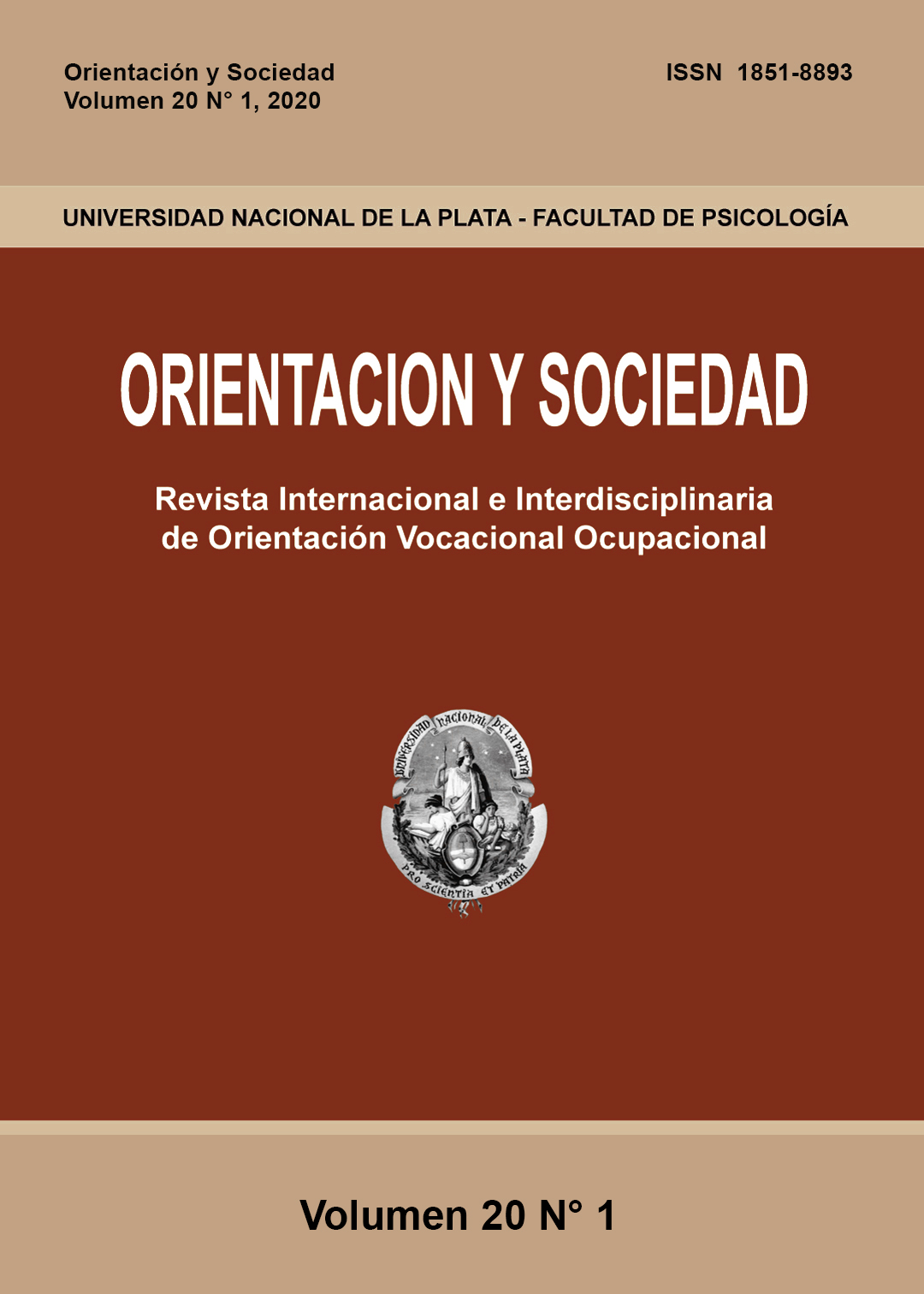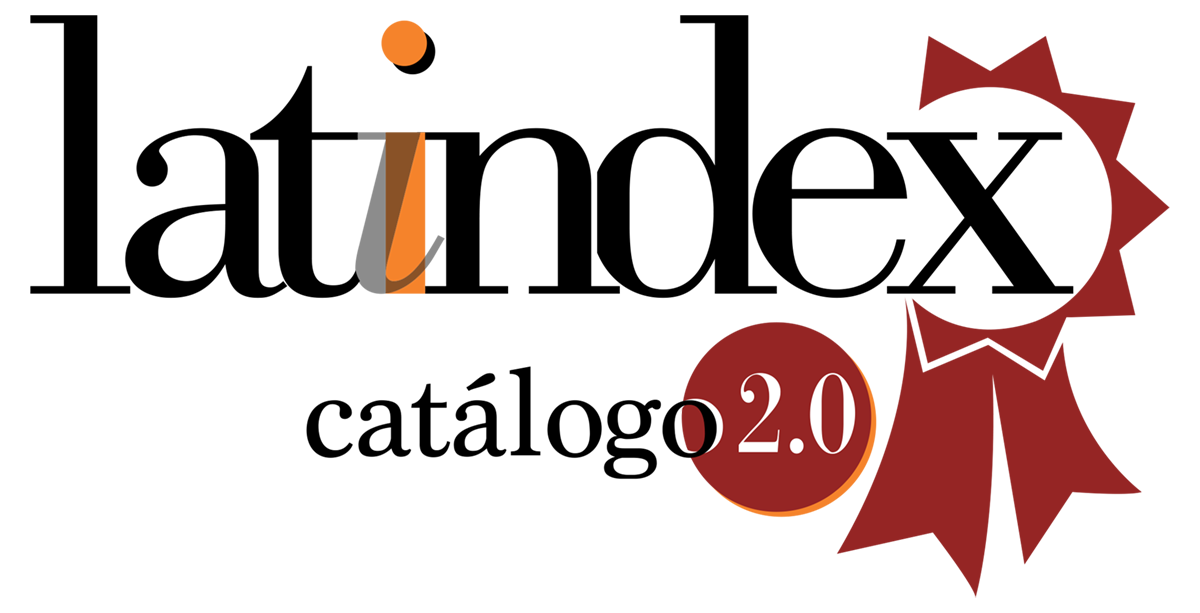TEMPORARY PERSPECTIVE IN A SAMPLE OF ARGENTINE AND COLOMBIAN ADOLESCENTS
Keywords:
time perspective, adolescence, future orientation, balanced time perspectiveAbstract
Time Perspective (TP) refers to temporal orientation, and it means that people use to focus on the past, present or future. The TP is a process that organizes, explains, and gives sense to people’s behaviors through five time frames: positive past, negative past, hedonistic present, fatalistic present and future. Working on the TP improves health, increases bonds and promotes the development of a successful career. We used a non-experimental, descriptive, and comparative cross-sectional design. 696 students from Buenos Aires, Argentina and from Villavicencio city, Colombia, participated voluntarily. We applied the Time Perspective Inventory. Argentine adolescents tend to orientate towards the hedonistic present. The context where adolescents live, with occupational instability and with its institutions in crisis, could be implicated. The Colombian sample showed higher scores in the negative past and fatalistic present, which it could be related to growing up in the middle of the Colombian conflict. Because of this, adolescents could perceive little control over their present and remember their past as a difficult one.
Downloads
References
Aisenson, G., Legaspi, L., Valenzuela, V., Moulia, L., De Marco, M., Baylac, S., Lavatelli, L. & Czerniuk, R. (2013). Trayectorias y anticipaciones de futuro de jóvenes adultos socialmente vulnerables. Anuario de Investigaciones, 20, 115-124. Disponible en: <https://www.redalyc.org/pdf/3691/369139949045.pdf>
Asociación Médica Mundial (2017). Declaración de Helsinki de la AMM -principios éticos para las investigaciones médicas en seres humanos. Disponible en: <https://www.wma.net/es/policies-post/declaracion-de-helsinki-de-la-amm-principios-eticos-para-las-investigaciones-medicas-en-seres-humanos/>
Azpilicueta, A. E. (2018). Evaluación del modelo de autogestión de carrera de la teoría social cognitiva en estudiantes de la escuela secundaria. Tesis doctoral. Universidad Nacional de Córdoba, Argentina.
Boniwell, I., Osin, E., Linley, P. A. & Ivanchenko, G. V. (2010). A question of balance: Time perspective and well-being in British and Russian samples. The Journal of Positive Psychology, 5, 24-40. Doi: 10.1080/17439760903271181.
Boniwell, I. & Zimbardo, P. (2004). Balancing time perspective in pursuit of optimal functioning. En P. A. Linley & S. Joseph (eds.), Positive psychology in practice (pp. 165-178). Hoboken, NJ: Wiley.
Carcelén Velarde, M. C. & Martínez Uribe, P. (2008). Perspectiva temporal futura en adolescentes institucionalizados. Revista de Psicología, 26, 255-276. Disponible en: <http://revistas.pucp.edu.pe/index.php/psicologia/article/view/1060>
Centro Nacional de Memoria Histórica (2018a). Género y memoria histórica. Balance de la contribución del CNMH al esclarecimiento histórico. Bogotá: CNMH. Disponible en: < http://centrodememoriahistorica.gov.co/wp-content/uploads/2020/01/BALANCE_GENERO.pdf >
Centro Nacional de Memoria Histórica (2018b). Regiones y conflicto armado. Balance de la contribución del CNMH al esclarecimiento histórico. Bogotá: CNMH. Disponible en: <http://centrodememoriahistorica.gov.co/wp-content/uploads/2020/01/BALANCE_REGIONES.pdf>
Centro Nacional de Memoria Histórica (2019). Análisis cuantitativo sobre el paramilitarismo en Colombia. Hallazgos del Mecanismo no Judicial de Contribución a la Verdad. Bogotá: CNMH. Disponible en: <http://centrodememoriahistorica.gov.co/wp-content/uploads/2020/02/Libro_Paramilitarismo_baja.pdf>
Código deontológico y bioético del ejercicio de la psicología en Colombia. Ley 1090 (2006), [en línea]. Disponible en: <https://www.infopsicologica.com/documentos/2009/Deontologia_libro.pdf>
Díaz Morales, J. F. (2006). Estructura factorial y fiabilidad del inventario de perspectiva temporal de Zimbardo. Psicothema, 18, 565-571. Disponible en: <http://www.psicothema.com/psicothema.asp?id=3254>
Echeverría Samanes, B. & Martínez Clares, P. (2018). Revolución 4.0, Competencias, Educación y Orientación. Revista Digital de Investigación en Docencia Universitaria, 12, 4-34. Disponible en: <https://dx.doi.org/10.19083/ridu.2018.831>
Federación de Psicólogos de la República Argentina (2013). Código de Ética Nacional de Argentina, [en línea]. Disponible en: <http://fepra.org.ar/docs/acerca_fepra/codigo_de_etica_nacional_2013.pdf>
Fernández Lamarra, N. (2009). Universidad, sociedad y calidad en América Latina. Situación, desafíos y estrategias para una nueva agenda. Buenos Aires: EDUNTREF.
Ferrando, P. J. & Chico, E. (2000). Adaptación y análisis psicométrico de la escala de deseabilidad social de Marlowe y Crowne. Psicothema, 12, 383- 389. Disponible en: <http://www.psicothema.com/psicothema.asp?id=346>
Florenzano, R. (1998). Familia y salud de los jóvenes. Familia y crisis conyugal. Santiago: PUC de Chile.
Galarraga, M. L. & Stover, J. B. (2016). Inventario de Perspectiva Temporal de Zimbardo: Adaptación en estudiantes de nivel medio de Buenos Aires. Psicodebate, 16, 109-128. Doi: https://doi.org/10.18682/pd.v16i1.540
Galarraga, M. L. & Stover, J. B. (2017). Perspectiva temporal futura y estrategias de afrontamiento en estudiantes de nivel medio próximos a egresar. Investigaciones en Psicología, 22, 37-45. Disponible en: <http://www.psi.uba.ar/investigaciones/revistas/investigaciones/indice/trabajos_completos/anio22_2/galarraga.pdf>
Guichard, J. (2005). Life-long self-construction. International Journal for Educational and Vocational Guidance, 5, 111-124. Doi: 10.1007/s10775-005-8789.
Hernández, R., Fernández, C. & Baptista, P. (2014). Metodología de la investigación (6a. ed.). México D.F.: McGraw-Hill.
Korinfeld, D., Levy, D. & Rascovan, S. (2013). Entre adolescentes y adultos en la escuela. Puntuaciones de época. Buenos Aires: Paidós.
Lazarus, R. & Folkman, S. (1984). Stress, appraisal and coping. Nueva York: Springer.
Lens, W., Paixáo, M. P., Herrera, D. & Grobler, A. (2012). Future time perspective as a motivational variable: content and extension of future goals affect the quantity and quality of motivation. Japanese Psychological Research, 5, 321-333. Doi: 10.1111/j.1468-5884.2012.00520.x
Mendivelso Díaz, M. E. (2017). Potencial resiliente y perspectiva temporal futura en adolescentes colombianos pertenecientes a familias monoparentales. Tesis de maestría inédita. Universidad de Buenos Aires, Buenos Aires.
Nunes Janeiro, I. (2010). Motivational dynamics in the development of career attitudes among adolescents. Journal of Vocational Behavior, 76, 170-177. Disponible en: <https://doi.org/10.1016/j.jvb.2009.12.003>
Nurmi, J. E. (1991). How do adolescents see their future? A review of the development of future orientation and planning. Developmental Review, 11, 1-59. Disponible en: <https://doi.org/10.1016/0273-2297(91)90002-6>
Omar, A., Uribe Delgado, H., Aguiar de Souza, M. & Soares Formiga, N. (2005). Perspectivas de futuro y búsqueda de sensaciones en jóvenes estudiantes. Un estudio entre Argentina y Brasil. Revista Latinoamericana de Estudios Educativos, 35, 165-180. Disponible en: <https://www.redalyc.org/articulo.oa?id=27035206>
Otzen, T. & Manterola, C. (2017). Técnicas de muestreo sobre una población a estudio. International Journal of Morphology, 35, 227-232. Disponible en: <https://scielo.conicyt.cl/pdf/ijmorphol/v35n1/art37.pdf>
Oyanadel, C. & Buela-Casal, G. (2011). La percepción del tiempo: influencias en la salud física y mental. Universitas Psychologica, 10, 149-161. Disponible en: <https://doi.org/10.11144/Javeriana.upsy10-1.ptis>
Oyanadel, C., Buela-Casal, G. & Pérez Fortis, A. (2014). Propiedades psicométricas del Inventario de Orientación Temporal de Zimbardo en una muestra chilena. Terapia psicológica, 32, 47-55. Disponible en: <http://dx.doi.org/10.4067/S0718-48082014000100005>
Paszkowska-Rogacz, A. (2015). Temporal orientation of young people and their career maturity. Journal of Counsellogy, 4, 263-282. Disponible en: <https://www.researchgate.net/profile/Anna_Paszkowska-Rogacz/publication/304805037_Temporal_orientation_of_young_people_and_their_career_maturity/links/577bb44c08aec3b743366469.pdf>
Pérez, M. J., Labiano, M. & Brusasca, C. (2010). Escala de Deseabilidad Social: Análisis psicométrico en muestra argentina. Evaluar, 10, 53-67. Doi: https://doi.org/10.35670/1667-4545.v10.n1.458
Rascovan, S. (2012). Los jóvenes y el futuro. Programa de orientación para la transición al mundo adulto. Buenos Aires: Noveduc.
Rivelis, G. (2007). Construcción vocacional. ¿Carrera o camino? Buenos Aires: Noveduc.
Stolarski, M., Bitner, J. & Zimbardo, P. G. (2011). Time perspective, emotional intelligence and discounting of delayed awards. Time and society, 20, 346-363. Doi: 10.1177/0961463X11414296
Stolarski, M., Fieulaine, N. & Van Beek, W. (2015). Time perspective theory: Review, research and application. Cham: Springer International. Doi: 10.1007/978-3-319-07368-2
Stolarski, M., Wiberg, B. & Osin, E. (2015). Assessing temporal harmony: The issue of a balanced time perspective. En M. Stolarski, N. Fieulaine & W. Van Beek (eds.), Time perspective theory: Review, research and application (pp. 57-71). Cham: Springer International. Doi: 10.1007/978-3-319-07368-2
Tardy, C. H. (1985). Social support measurement. American Journal of Community Psychology, 13, 187-202. Disponible en: <https://doi.org/10.1007/BF00905728>
Wenger, L. & Andrés-Pueyo, A. (2016). Test personológicos y clínicos en español para evaluar adolescentes infractores. Papeles del psicólogo, 37, 89-106. Disponible en: <http://www.papelesdelpsicologo.es/pdf/2694.pdf>
Zimbardo, P. G. & Boyd J. N. (1999) Putting time in perspective: A valid, reliable individual-differences metric. Journal of Personality and Social Psychology, 77, 1271-1288. Disponible en: <https://www.researchgate.net/publication/232460587_Putting_Time_in_Perspective_A_Valid_Reliable_Individual-Differences_Metric>
Zimbardo, P. G. & Boyd, J. N. (2008). The time paradox: The new psychology of time that will change your life. Nueva York: Free Press.
























